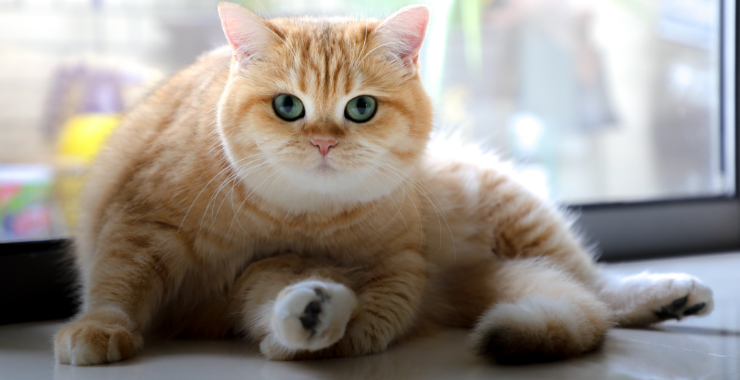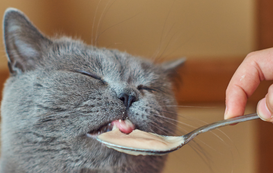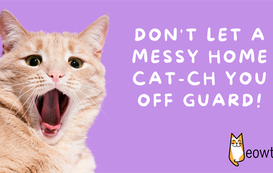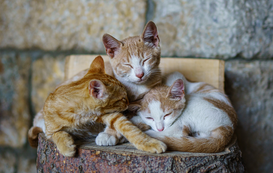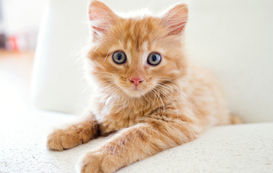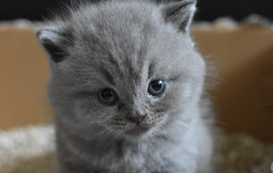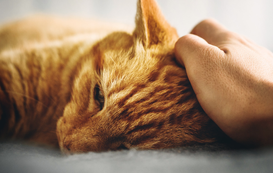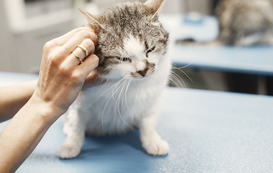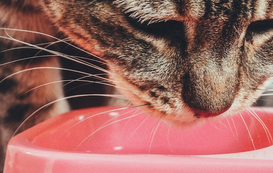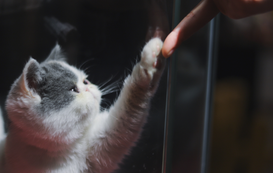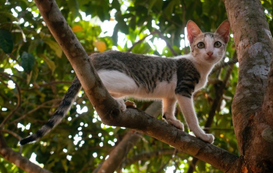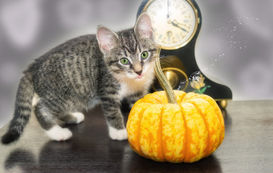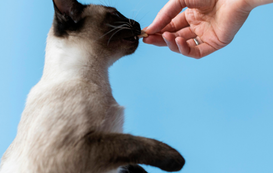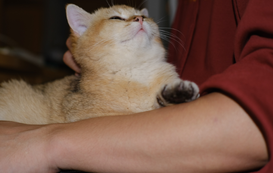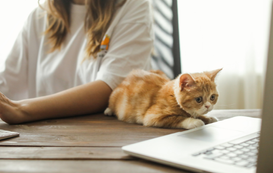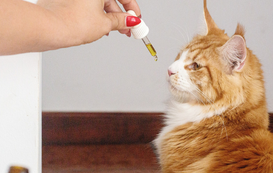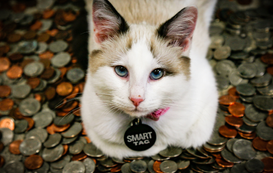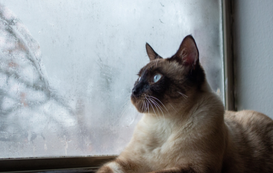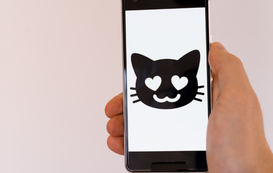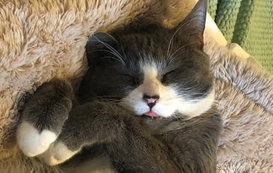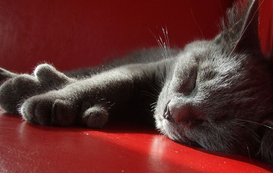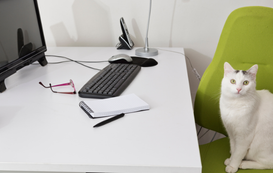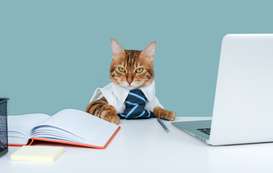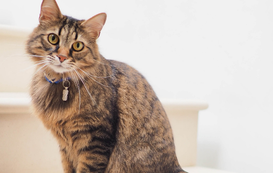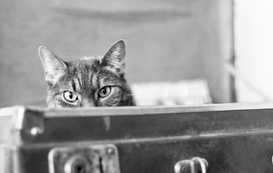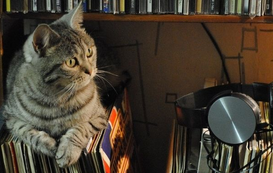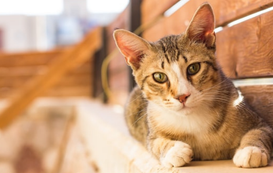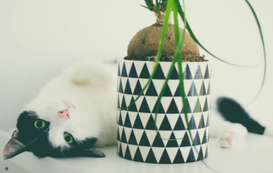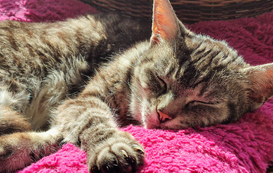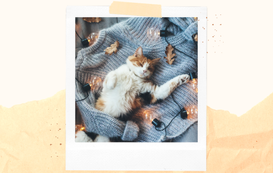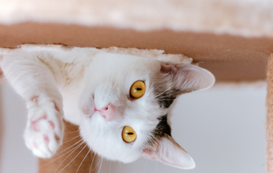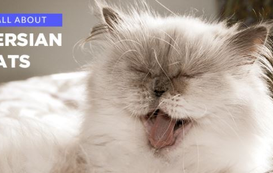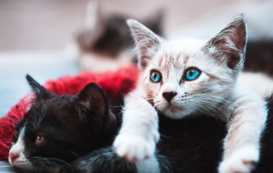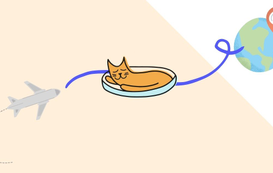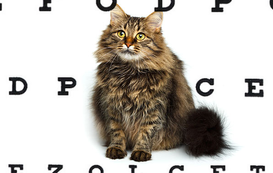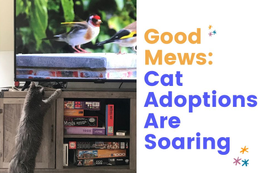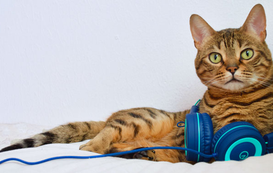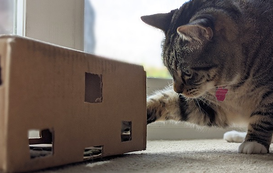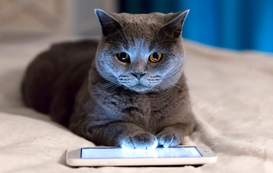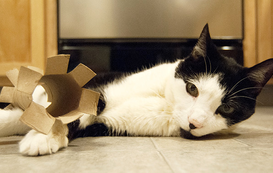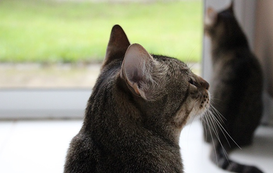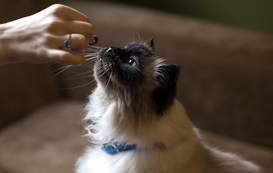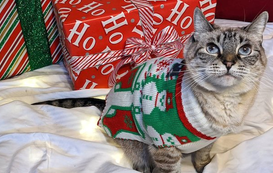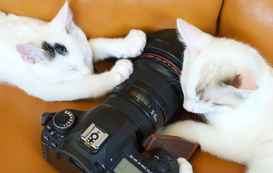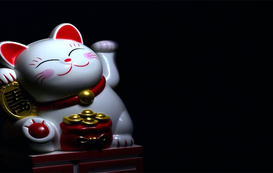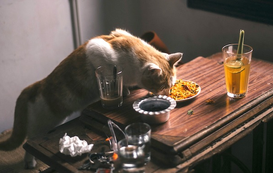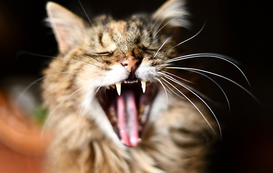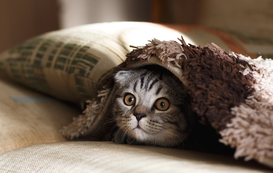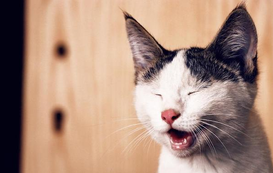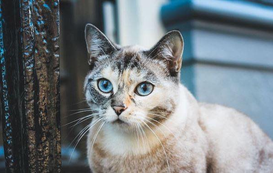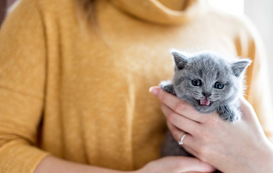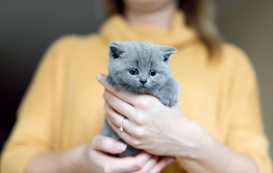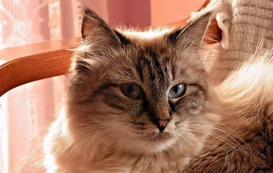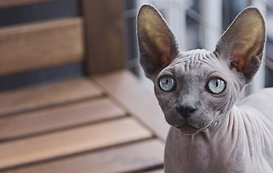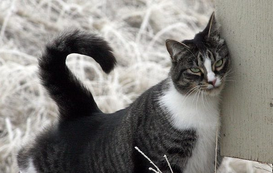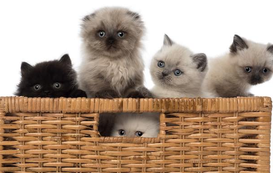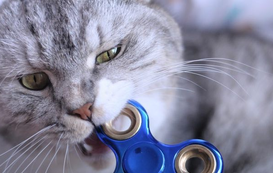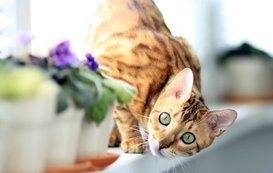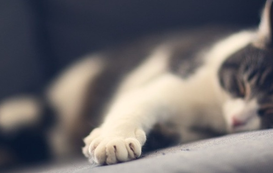Popular posts
Cat Health - A Guide to Weight Loss
When it comes to our cats, the chubbier, the cuter, right? Over-feeding your kitty might seem harmless, but – combined with a lack of exercise – it’s one of the main reasons why cats gain weight. Excess fat can put your furbaby at risk of major health complications and, ultimately, reduce their lifespan.
Feline obesity is a serious and life-threatening issue. It may come as a surprise, but it’s extremely common. In 2017, a clinical survey conducted by the Association for Pet Obesity Prevention (APOP) concluded that as much as 60% of domestic cats in the U.S. are overweight. Cat weight gain is often wrongfully attributed to simply getting older. However, it’s important to take action and treat it quickly.
Is Fluffy fat, or just really, well… fluffy? Getting your kitty back to a healthy weight might be challenging but not impossible. In this article, we’ll discuss the ideal weight for cats, the health risks of feline obesity, and some tips on how to help your furry friend shed off those extra pounds.
How to know if your cat is overweight
First and foremost, what is a healthy weight for cats? According to the Clinical Nutrition Team at the Cummings Veterinary Medical Center at Tufts University, most cats should weigh about 7-12 lbs. Keep in mind that the exact number depends on your cat’s age, breed, and whether or not it’s neutered.
So, how do you tell if your cat is obese? As a rule of thumb, you should feel your cat’s ribs but not see them. Run your fingers over their ribcage; if you have to press down hard to feel it, then Fluffy’s packed on some excess weight.
Another way to tell is with the Body Condition Score (BCS) method. BCS is a tool veterinarians use to determine the right weight loss plan for our kitties. To do this, stand directly above your cat and look down while it’s standing on all fours. You should be able to see your cat’s waist right behind the ribs.
When in doubt, take your cat to the veterinarian for a proper assessment.
What are the risks of feline obesity?
Letting your little one reach the point of obesity can lead to a long list of life-threatening complications. According to Krista Williams (BSc, DVM) and Ernest Ward (DVM), even a few extra pounds are enough to put your cat at risk of major health disorders. Overweight kitties also tend to lie around more, which makes it easy to ignore early signs of a disease, such as lethargy.
The main health problems caused by feline obesity include:
- Diabetes
- Kidney issues
- Heart diseases
- Osteoarthritis
- Chronic inflammation
- High blood pressure
- Some forms of cancer
- Restricted mobility (i.e., inability to groom themselves) leading to a higher risk of infections
- Skin issues, such as dandruff or dermatitis
- A shorter lifespan
Our cats aren’t that different from us humans. It comes as no surprise that heavy cats often experience depression and low moods. Think about it: When we overeat to the point of feeling sick, we just want to lay around and do nothing. Now imagine doing this every day.
Overweight cats live poor-quality lives. It might not be obvious from the outside, but they feel uncomfortable and are probably in pain. So it’s best to take this issue seriously.
Choosing the right weight loss plan for your cat
Every feline is different. Therefore, your cat’s nutrition plan needs to be designed specifically for them. Your veterinarian should be the one to recommend a weight reduction formula according to your cat’s breed, build, and overall health state.
There’s a ton of information about different weight loss plans for cats, but experts at VCA Hospitals suggest that wet canned food is best for most obese cats. They also recommend a high-protein, low-carbohydrate diet. At any rate, it’s always important to look at the ingredients of your cat food and to know which ones to avoid.
How to help your cat lose weight in a healthy way
Getting your beloved purrbaby to slim down is a combination of two things: making changes to their diet and increasing physical exercise. This change should always happen gradually, so be prepared to invest time and a lot of patience. The reward, however? A longer and healthier life for your kitty, which is priceless.
Consult with your veterinarian
Do not skip this step. Your veterinarian is a medical professional, and they know your furball’s health history. Only they can formulate a proper weight-reduction plan, and they should always monitor your cat when you put them on a diet.
Note that you should never, ever starve your cat. Losing too much weight too fast can be very harmful. When cats don’t eat for even two consecutive days, they are at risk of hepatic lipidosis, a life-threatening form of liver disease. The risk is even higher when the cat is obese.
Count and restrict calories
In most cases, your vet will suggest a meal plan with a specific calorie intake per day. Make sure to follow their instructions religiously. If your kitty is sterilized, you might have already had to gradually reduce their food intake before. It’s a similar concept here.
You’ll need a measuring cup (your clinic can provide you with it) to calculate the daily food portions. It’s a good idea to also keep track of everything your cat eats and log the weight loss progress as you go.
Increase exercise and playtime
Getting your cat to exercise can be tricky, especially when it comes to an older kitty. The good news is that there are a million fun ways to get your cat moving! From puzzle feeders to DIY cat toys, or even training your furball to go on walks, there is a solution for everyone.
Experts recommend fifteen minutes of playtime twice a day. For indoor-only cats especially, the key is to make their environment as exciting as possible. Store away their favorite toys after each play session so they seem new again next time. Also, have one or two toys lying around at all times. Consider investing in a sturdy cat tree, so your little one can climb up and down, which makes for an excellent form of exercise.
Older kitties might be hard to motivate, but don’t give up. Try different things and see what excites them the most. You might have to get creative here. For example, the Clinical Nutrition Team at Tufts University mentions one of their clients who made their cat chase them around while they held an open can of food before finally feeding them. Just an idea.
Avoid free-feeding
With this feeding style, your kitty is freely grazing throughout the day, meaning it has unlimited food available at all times. Free-feeding makes it hard to know exactly how many calories your cat eats. Instead, establish a routine and always use the measurements recommended by your vet.
If you have multiple cats and they’re used to being free-fed, you’ll have to separate the overweight one during mealtime; this is where automatic cat feeders can come in handy.
Cut out snacks
Our kitties deserve all the love in the world, and sometimes we express this love through snacks. While treats are a great tool for training your cat, they should be eliminated from their weight loss diet.
Snacks (especially store-bought) are filler-food. They usually don’t offer any nutritional value and are just empty calories. As hard as it is, stay strong and resist those meow-dorable purrs requesting treats. Stick to what the kitty doctor recommended.
Take action early
Don’t wait to talk to your vet about your cat’s weight gain. Losing weight becomes harder the more pounds your cat puts on. It’s best to address the issue as soon as you notice the extra fat on your kitty.
Consider a raw food diet
Raw food diet for cats is a controversial topic among cat parents and veterinarian experts. However, your chunky furball might benefit from it, as cats often naturally lose weight when they switch to a raw food diet. That is mainly because they tend to feel fuller, so they eat less.
That being said, always remember to consult with your veterinarian before you choose to feed Fluffy any raw food.
The takeaway
Weight gain in cats is usually caused by over-feeding and a lack of activity. Feline obesity is very common and, unfortunately, can be life-threatening. Managing your cat’s weight can seem overwhelming, but it’s our duty as kitty parents to keep them healthy and happy. Remember that putting your cat on a diet should always be done under your veterinarian’s supervision.
Photo by Rick T on Unsplash

